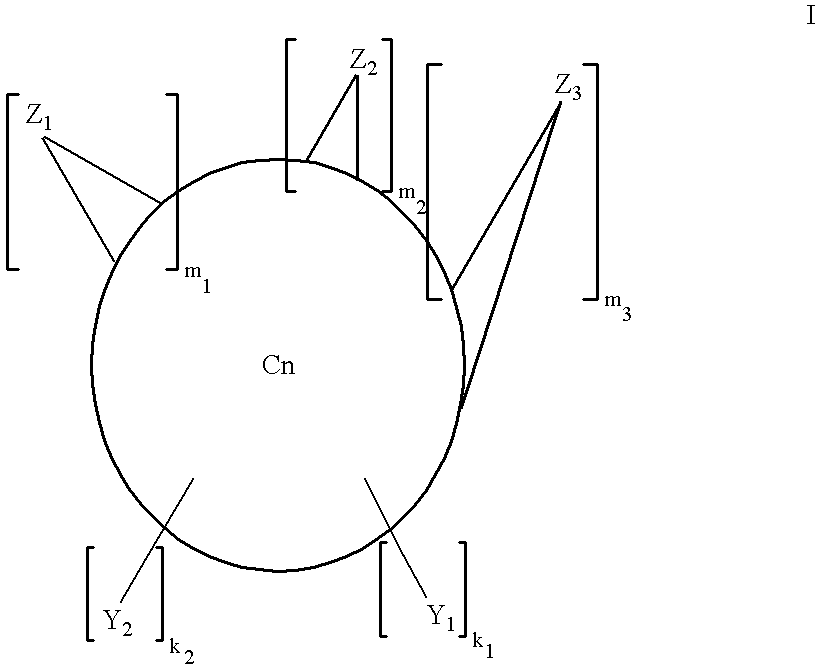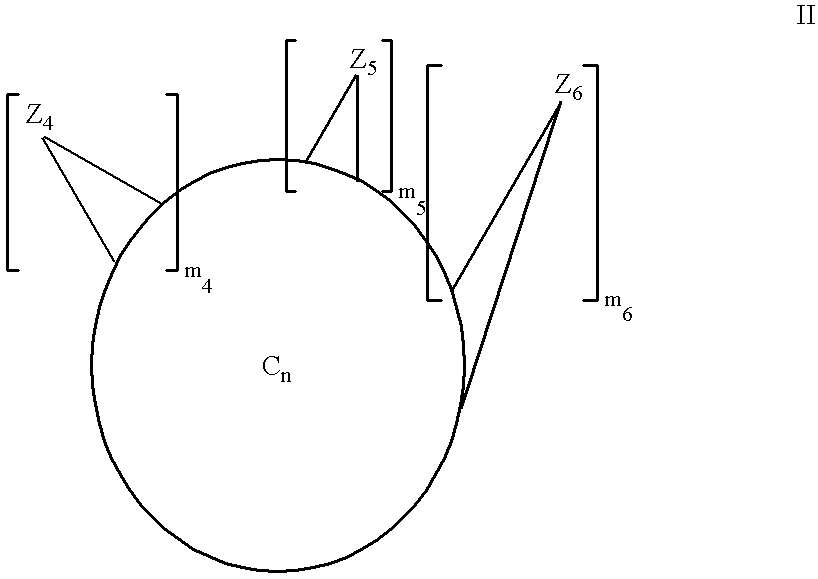Multiply-substituted fullerenes
a technology of fullerene and substituted parts, applied in the field of multi-substituted, can solve the problems of unfavorable commercial production of peptides, promising lead compounds, and inability to synthesize all of the possible analogs of a given, and achieve the effect of effectively entanglement with the blood-brain barrier
- Summary
- Abstract
- Description
- Claims
- Application Information
AI Technical Summary
Benefits of technology
Problems solved by technology
Method used
Image
Examples
example 1
Synthesis of N-tritylglycine
N-tritylglycine was prepared in 90% yield from trityl chloride and glycine according to the procedure of Zervas et al., J. Am. Chem. Soc, 78:1359 (1956).
example 2
Synthesis of N-triphenylmethyloxazolidone
In a 500 mL three-necked roundbottom 24 / 40 flask equipped with nitrogen inlet, graduated pressure-equalizing addition funnel, and magnetic stirrer was added 1.056 gm (3.327 mMol) of tritylglycine and 78 mL of absolute ethanol. Upon solution of the tritylglycine, 1.55 mL of 37% (w / v) aqueous formaldehyde (formalin) in 30 mL of 95% ethanol was added dropwise over a period of two hours, at room temperature. At the end of this period, the mixture was evaporated to dryness on a Buchi rotary evaporator at 30.degree. C. under mechanical pump vacuum (approximately 50 microns pressure). The residue was taken up in 155 mL of dichloromethane, dried over anhydrous MgSO.sub.4, and evaporated in the rotary evaporator as above to yield crude crystalline material. This was recrystallized from warm methanol to give 1.090 gm of pure crystalline material.
example 3
Synthesis of N-trityl(azacyclopentano)-[1,2]-buckminsterfullerene by Dipolar Cycloaddition of N-triphenylmethyloxazolidone to C.sub.60
In a 500 mL three-necked round bottom 24 / 40 flask equipped with nitrogen inlet, reflux condenser, and magnetic stirrer was added 252.6 mg (0.766 mMol) of N-triphenylmethyloxazolidone in 163 mL of toluene. To this solution under nitrogen was added 502.3 mg (0.697 mMol) of chromatographically purified C.sub.60 (MER, Tucson, Ariz.). Upon thorough mixing of the solutions under nitrogen, the solution was heated under reflux and nitrogen for a 16-hour period. At the end of this time, solvent was removed on a Buchi rotary evaporator at 30.degree. C. under mechanical pump vacuum (approximately 50 microns pressure). The dark-colored residue was purified by flash chromatography on chromatographic grade silica using as eluting solvent a 1:1 (v / v) mixture of toluene and hexanes. Pooling of approximate fractions followed by removal of solvent as above yielded 103 ...
PUM
 Login to View More
Login to View More Abstract
Description
Claims
Application Information
 Login to View More
Login to View More - R&D
- Intellectual Property
- Life Sciences
- Materials
- Tech Scout
- Unparalleled Data Quality
- Higher Quality Content
- 60% Fewer Hallucinations
Browse by: Latest US Patents, China's latest patents, Technical Efficacy Thesaurus, Application Domain, Technology Topic, Popular Technical Reports.
© 2025 PatSnap. All rights reserved.Legal|Privacy policy|Modern Slavery Act Transparency Statement|Sitemap|About US| Contact US: help@patsnap.com



